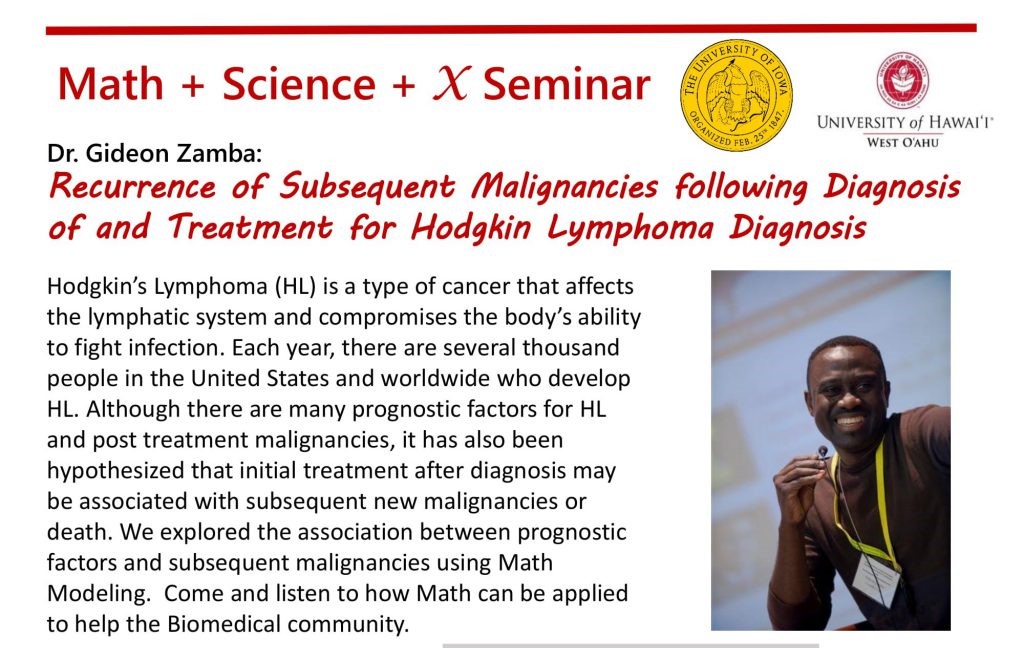
The first Math + Science + X seminar of 2018 will focus on how math can be applied to help the Biomedical community.
Dr. Gideon Zamba, an associate professor in the Department of Biostatistics in the University of Iowa College of Public Health and director of the Iowa Summer Institute in Biostatistics will give a presentation titled “Recurrence of Subsequent Malignancies following the Diagnosis of and Treatment for Hodgkin Lymphoma Diagnosis.”
Zamba, who also is a Carver College of Medicine Teaching Scholar and Biostatistician, The Holden Comprehensive Cancer Center, teaches courses in biostatistics theory, method, studies, and related subject matter. University of Iowa’s Department of Biostatistics offers students a way to combine mathematical, statistical, and biological interests in conducting research.
Zamba’s talk is scheduled for 11 a.m.-Noon, Friday, Jan. 19 in E243. The abstract of his talk:
Hodgkin’s Lymphoma (HL) is a type of cancer that affects the lymphatic system and compromises the body’s ability to fight infection. HL typically starts in white blood cells. HL occurs when a specific type of cell, the Reed-Stenberg cell, is present in the host’s system, causing the body’s infection fighting cells to develop a mutation in their DNA. Each year, there are several thousand people in the United States and worldwide who develop HL.
Although there are many prognostic factors for HL and post treatment malignancies, it has also been hypothesized that initial treatment after diagnosis may be associated with subsequent new malignancies or death. We explored the association between prognostic factors and subsequent malignancies using the Oncology Registry at the University of Iowa Hospitals and Clinics.
In this exploration we account for subject random effect through a gamma frailty model for recurrent events, which acts multiplicatively and jointly on both the hazard of new malignancies and the hazard of death. The parameters of the model were iteratively estimated using a penalized marginal likelihood approach. The findings suggest a significant within subject correlation, and a significant treatment effect on both the hazard of recurrence and the hazard of death.
